 By Moises J Goldman & John Jonelis
By Moises J Goldman & John Jonelis
Today’s business culture is more strongly creative and entrepreneurial than at any time in history, posing new organizational opportunities and challenges. That calls for a new way to think about and implement design management. This is the final installment of a four-part series introducing the Controlled Design Management Model. Using the language of the digital age, this model applies a radically different technique to managing the creative process. The history and theory was discussed in Parts 1 through 3. Now let’s set up a working model.

Figure 6 – Controlled Design Management Model
Practical Example
Let’s optimize an organization using a Controlled Design management Model. For clarity, this particular enterprise is engaged in the deployment of a product and has just three primary departments:
- MARKETING DEPARTMENT – Produces market research, and marketing planning. The input to this department is idea generation from its founders, its research wing, or its own internal analysis. Its output is the product concept, complete with all the required features and characteristics that the market requires in tandem with a marketing plan for a successful launch. Marketing’s output serves as the input for Systems Engineering.
- SYSTEMS ENGINEERING DEPARTMENT: Translates the marketing requirements into engineering concepts, tests their feasibility (simulation), and produces the required technical maps and schematics to be able to create a working prototype. Its input is the output from Marketing. Its output is the technical representation of the product, including mathematical and simulation results, schematics, and mock-ups. This becomes the input for Applied Engineering.
- APPLIED ENGINEERING DEPARTMENT: Creates and tests a physical prototype until it is ready to deploy. (We’re not taking into consideration production or logistics in this example.). Applied Engineering starts with the output from System Engineering. Its output is the finished prototype ready for testing and then deployment by Sales.
We have three departments. Each is solely responsible for the optimization and efficiency of its own particular function within the organization. Each is in a dependent, sequential relationship with two other departments. Now, we link the individual department’s optimizing flow chart (from Figure 6) into one companywide Controlled Management Model. (See Figure 7.)

Figure 7 – Optimized Departments
Let’s look at application. Based on Figure 7, it’s clear that to achieve optimum productivity, a department must minimize internal disturbances. Examples of such disturbances include underperforming employees, faulty data, equipment malfunctions, changes in existing regulations, policy changes induced by government, budgetary restrictions, new competition, company restructuring. All of these are down-to-earth practical matters, as are the corrections, which are ordinary responses and decisions. What is new is the simple structure of the decision-making process and the ability to map it and to know exactly where, in the larger picture, you are at any given time. That helps eliminate bottlenecks and confusion, and helps address a problem early—before a weakness becomes magnified down the line.
Conclusion
Does the Controlled Design Management Model meet the goals stated earlier in the paper?
- Intuitive – The management system is readily understood and implemented using visual tools in the language of the digital age. It entirely bypasses complex mathematics as well as the sequential categorization of past models.
- Adaptable – It does not impose a particular organizational structure but rather adapts to any.
- Focused – Departments do not involve themselves in the optimization of other departments—each is concerned only with what is under its direct control.
- Practical – It provides a roadmap for effectively optimizing and controlling the release of any new product. Each department’s optimization is a benefit to the workflow of the entire organization.
- Measurable – Because the sum of independent optimized departments adds up to the optimized organization, upper management can easily map and manage the progress of each department and the entire organization. Even in a complex organization, it is a simple matter to identify the bottlenecks in the process.
The Controlled Design Management Model works with the same basic material as all previous models—people, ideas, and structure—but does so from an entirely different perspective, using different thinking and tools—the very same principles as electronic control system design. It provides a practical digital approach in a digital age.
■
Go back to Part 1
Download full paper (PDF)
.
References
- Deming, W. Edwards (1964) [1943]. Statistical Adjustment of Data. Dover. ISBN 0-486-64685-8. LCCN 64-24416. (1966) [1950]. Some Theory of Sampling. Dover. ISBN 0-486-64684-X. LCCN 66-30538.
- William Ouchi: “Theory Z” How American Business can meet the Japanese Challenge. Addison-Wesley Publishing Company, 1981
- Lean was originated by Eiji Toyoda and Taichi Ohno of Toyota Motors. Ohno, Taiichi (1988), Toyota Production System: Beyond Large-Scale Production, Productivity Press, ISBN 0-915299-14-3
- C. F., L. S. Shieh, Joint Automatic Control Conference, Michigan, p 454
- Shieh, L.S. and Goldman, M. J., 1974 I.E.E.E. Trans. Circuit Syst., 21, 341
- The Hollow Corporation, Anita Campbell, Small Business TRENDS (2012) https://smallbiztrends.com/2004/04/hollow-corporation.html
Graphics
Flow-charts by Moises Goldman and John Jonelis.
Graphics from MS Office.
About the Authors
 Dr. Moises J Goldman holds an MSEE and a PhD in Engineering Systems from UCLA, specializing in large-scale systems, process optimization, and product innovation. MBA from MIT Sloan, specializing in strategic planning and business development. His focus is on periods of challenge and change, including startup, growth and restructuring. Goldman served as CEO, COO, and CTO in diverse industries and developed business across the USA, Germany, Spain, Mexico, Dominican Republic, Jamaica, and Brazil, working with small firms as well as branded giants such as Lockheed, Rockwell, ATT, America Movil, GM, Ford, Scotia Bank, and HSBC. Sits on several boards where entrepreneurship and innovation are the primary goals. Consults to merging companies during the integration phase as well as startups, helping them become going concerns. Member of several advisory boards at MIT. Founding member of the TALENT program at IMSA. Dr. Goldman can be reached at Moises.Goldman@outlook.com
Dr. Moises J Goldman holds an MSEE and a PhD in Engineering Systems from UCLA, specializing in large-scale systems, process optimization, and product innovation. MBA from MIT Sloan, specializing in strategic planning and business development. His focus is on periods of challenge and change, including startup, growth and restructuring. Goldman served as CEO, COO, and CTO in diverse industries and developed business across the USA, Germany, Spain, Mexico, Dominican Republic, Jamaica, and Brazil, working with small firms as well as branded giants such as Lockheed, Rockwell, ATT, America Movil, GM, Ford, Scotia Bank, and HSBC. Sits on several boards where entrepreneurship and innovation are the primary goals. Consults to merging companies during the integration phase as well as startups, helping them become going concerns. Member of several advisory boards at MIT. Founding member of the TALENT program at IMSA. Dr. Goldman can be reached at Moises.Goldman@outlook.com
 John Jonelis patented seven products and developed dozens more in the field of air pollution control. Created the Revelation suite of trading algorithms. Private equity investor. Artist. Writer, and publisher of Chicago Venture Magazine and News From Heartland—the Journal of the Heartland Angels. Author of the novel, The Gamemaker’s Father. Illinois Wesleyan BFA, 1974. Kellogg MBA 1989.
John Jonelis patented seven products and developed dozens more in the field of air pollution control. Created the Revelation suite of trading algorithms. Private equity investor. Artist. Writer, and publisher of Chicago Venture Magazine and News From Heartland—the Journal of the Heartland Angels. Author of the novel, The Gamemaker’s Father. Illinois Wesleyan BFA, 1974. Kellogg MBA 1989.
Copyright © 2019 Moises Goldman & John Jonelis. All rights reserved. Quotation with attribution is permitted for educational purposes.
Chicago Venture Magazine is a publication of Nathaniel Press www.ChicagoVentureMagazine.com Comments and re-posts in full or in part are welcomed and encouraged if accompanied by attribution and a web link. This is not investment advice. We do not guarantee accuracy. Please perform your own due diligence. It’s not our fault if you lose money..
.
.





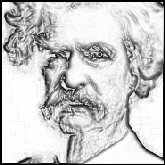


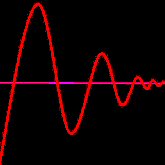




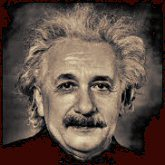























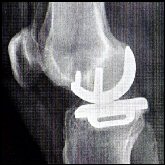



















































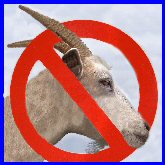













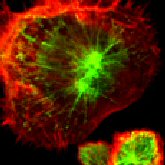


















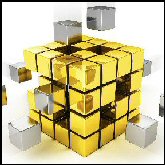












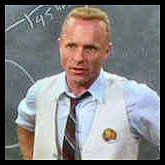



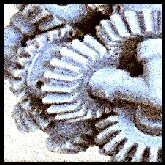



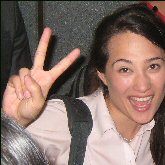























Pingback: CONTROLLED DESIGN MANAGEMENT – Part 3 | Chicago Venture Magazine